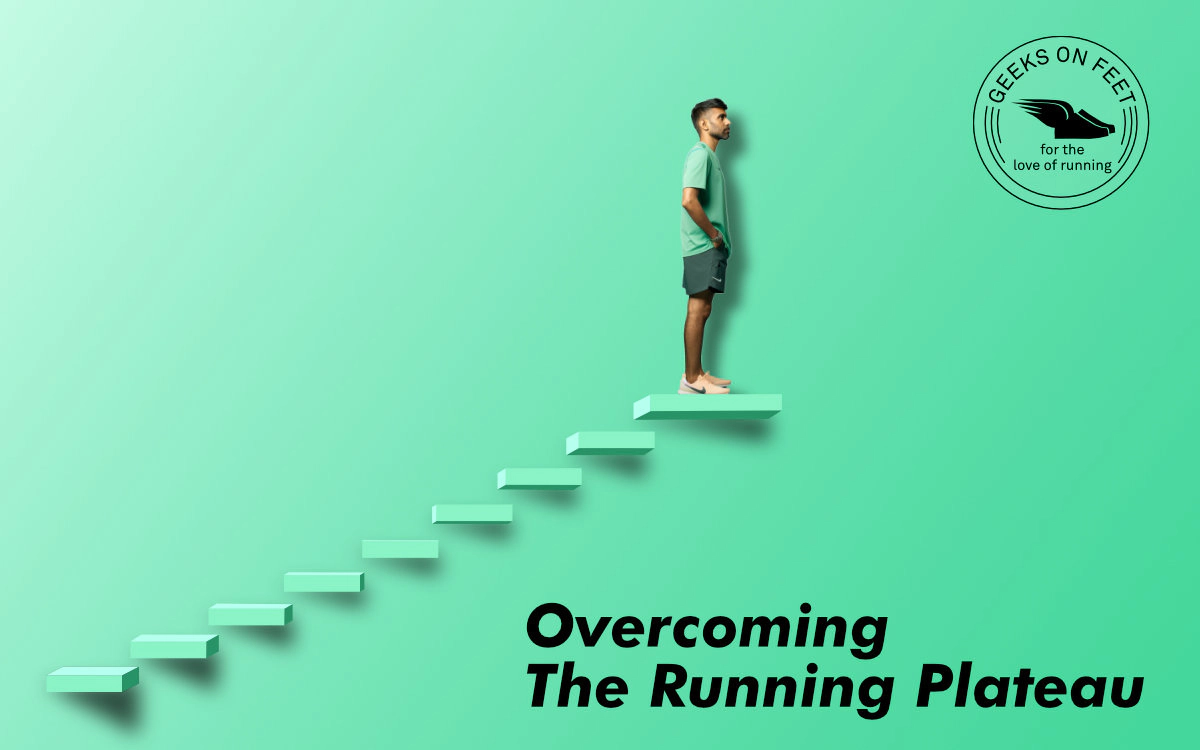
Consider two familiar scenarios:
Scenario 1 - You just finished a productive 12-week training cycle for a half-marathon. You’ve aced all the tune-up races along the way, and finally ran your personal best. Now you are all excited, and started your next training cycle with much bigger goals. But things are not the same any more. It is hard to hit the new goal paces, and it seems laborious to run the target mileage.
Scenario 2 - You have run the first half-marathon in 2h:20m. Over a year you’ve made significant progress, and reached a personal best time of 2h:03m. But breaking the 2h barrier seems elusive despite dedicated training and running multiple half-marathons.
You wonder what is happening? While putting all the hard work consistently, why are there no results?
Welcome to the running plateau. Every runner invariably sees plateaus in their running journey. Unable to hit the paces, finding it hard to run the long runs, not able to hit the new race goals are some of the manifestations of the plateau. It can be very frustrating.
So the question is why does it happen?
There are multiple reasons why this can happen.
Monotony in Training
We need to improve all aspects of fitness that define our performance - Aerobic, Anaerobic, muscular strength, mechanical efficiency and more. If the training is too polarized and focussed on one aspect but ignoring the others, you might hit your performance ceiling and will see diminishing returns. For example, focussing only on one aspect such as aerobic fitness by running longer mileage, you will soon diminishing returns from your training, will reach a plateau.
As you start running, build a holistic training regime with a variety. Vary the distances, vary the paces, vary the terrain, all of which helps. Add a few strength training days, and work on your mobility.
Please listen to our podcasts on training to understand how variety helps
Ep 22: The science of endurance training
Lack of Stimulus
Lack of training stimulus can be said as not challenging ourselves enough in training. If you max out your long runs at 20km week after week, don’t expect to do very well in your next half-marathon. Body needs the right stimulus to build the physiological and neurological adaptations required for next goals. Progressively increasing the distance will help you adapt better. For example, increasing weekly mileage progressively after every 2-3 weeks, will help adding stimulus, and bring new adaptations that will help you run better.
Training Overload
This is the opposite of the earlier point on “lack of training” stimulus. While it is true that training stimulus is good for positive adaptations, to be effective it is important that there is enough recovery as you move forward loading more.
Here is a real-life example of how a runner varies their tempo workouts with progressively load week after week. As you can see there is more variety, more training load, while there is recovery in between.
| Tempo workouts | Pace | Duration |
| 10 mins *3 | 5:10 min/km | Week 1 |
| 40 min | 5:20 min/km | Week 2 |
| 1K*5 | 5 min/km | Week 3 |
| No speed training | Week 4 | |
| 10mins *3 | 5:05 min/km | Week 5 |
So how does the body adapt to these faster paces?
The underlying principle is called Super Compensation which our body goes through. Super Compensation refers to progressive load and follows a period of recovery after a training cycle, after which we can perform at a higher capacity than the prior training cycle. It’s essentially the body’s adaptation that allows it to perform at a higher level than before after the right stimulus followed by recovery.
The picture above shows how the fitness level improves by adding right level of recovery and progressive stress (green curve). Red curve shows the training overload, while the amber curve shows the plateau in fitness progress.
How does Super Compensation really work?
To implement this in your training, you could follow the training periodization approach, which we detailed in our Periodization article.
Please read more here about Periodization in training.
Prepared by Team GeeksOnFeet for the love of running!